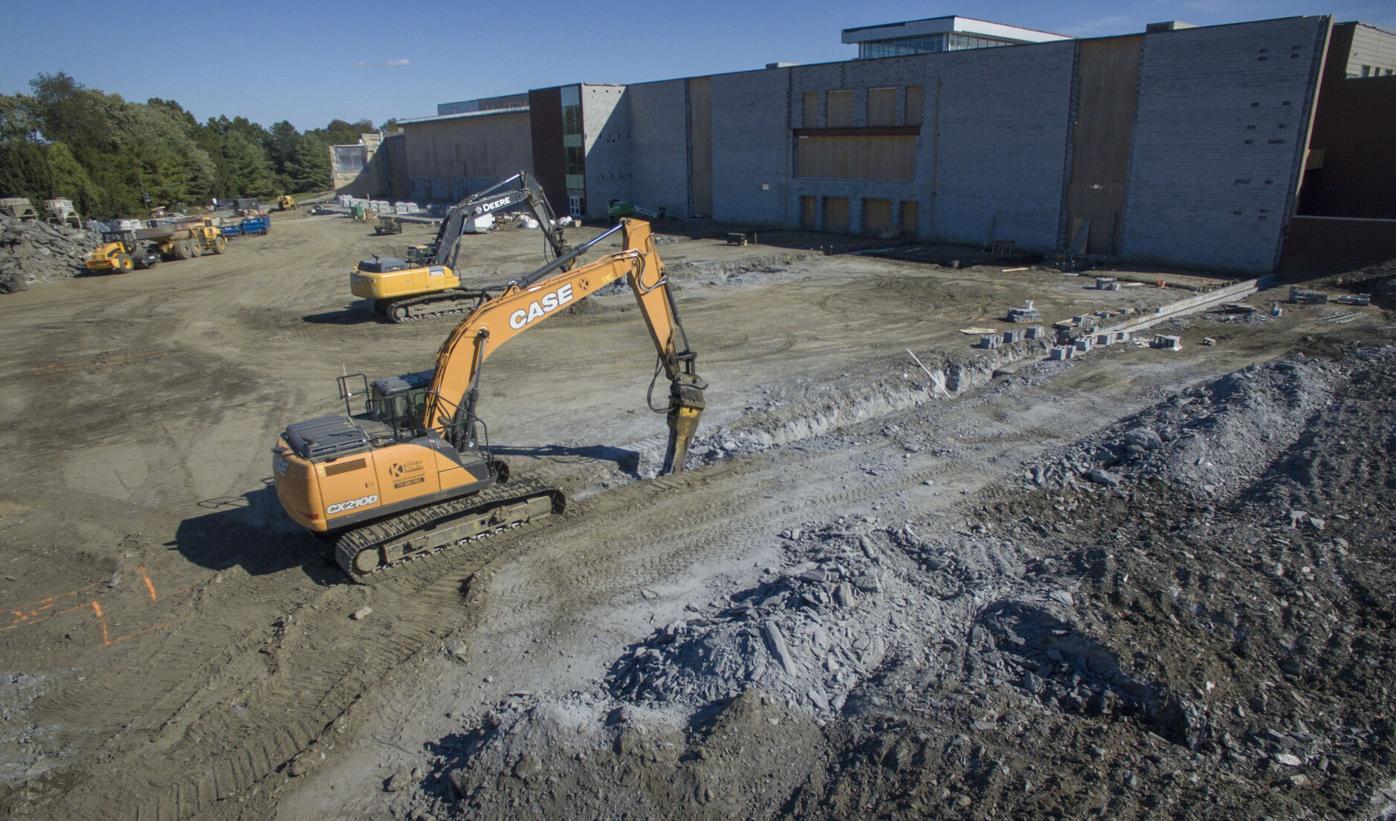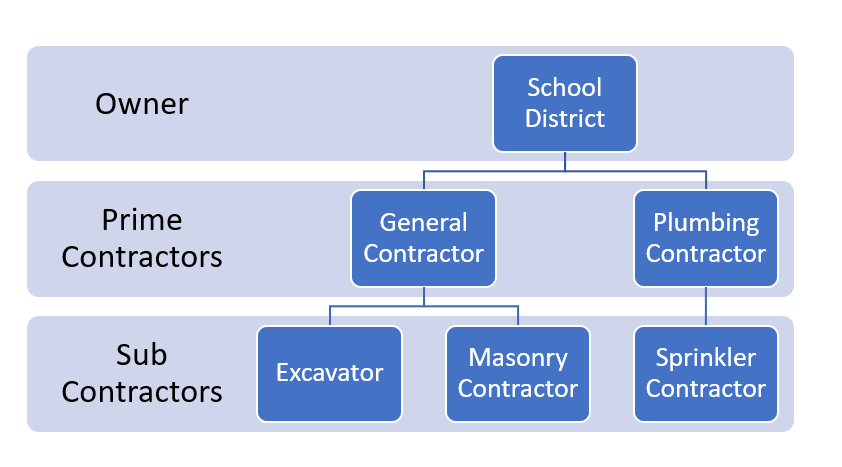Construction Contract Delivery Methods and their Impact on Design
The Architectural/Engineering/Construction industry is typically linked together, or at least thought of together with the acronym AEC. It is the assumption that Architecture and Engineering protocols are aligned with construction methods of delivery. This is most often not the case, especially with regard to smaller and medium-sized projects.
Figure 1: Large Public Projects are Always Design Bid Build

Construction Delivery Types Defined
Even deep within the construction industry, disagreements arise with regard to the definition of construction delivery methods. Notwithstanding, a general consensus exists with regards to the following three types of construction delivery methods:
- Design-Bid-Build
- Construction Manager at Risk
- Design-Build
Looking at these three types of delivery methods will help elucidate their differences and how they impact the design of building projects
Design Bid Build
In design bid build, design and construction are separate contracts. The only criterion for final project award, after bid, is lowest total cost. In these types of contracts, architectural and engineering drawings are completed up to 100% CD, whereupon the contractor puts together a construction bid. The construction bid is added to the design cost to bid on the project. Competing bids are evaluated based only on price, and the lowest bid is awarded to that respective contractor. Public projects such as schools, wastewater treatment plants, water treatment plants, township buildings, and some larger private sector projects utilize this construction delivery scheme.
These types of projects typically have an Agency Construction Manager overseeing the General Contractor. An Agency Construction Manager is a supervising entity who works on behalf of the owner to ensure schedule requirements are met, costs are kept within limits, and a general level of quality is met. Disputes often arise between the agency construction manager and the general contractors and the subcontractors
These types of projects are often susceptible to many change orders. A change order is when a contractor experiences an unforeseen cost, at no fault to the contractor, and needs additional project funding to absorb that cost. Change orders are subjective and may or may not be awarded upon request. The agency construction manager defends the requests for change orders on behalf of the owner. Some unscrupulous contractors bid the project low in order to secure the contract, with future plans to submit as many change orders as possible to maximize their project profit.
Design Bid Build sounds like a simple project delivery mechanism, but, after the project is awarded, different contractors may be “primed” with the owner instead of the general contractor. “Primed” simply refers to the fact that there is a direct financial path between the owner and the contractor. Typically, the general contractor is paid by the owner, and distributes payment to subcontractors, underneath them (financially speaking). However, in order to save costs, different arrangements may exist. See Figure 2 for an example:
Figure 2: General and Sub Contractor Arrangement

This arrangement may not appear problematic; however, the general contractor will not have any financial control authority over the plumbing contractor and the sprinkler contractor to ensure work gets done. This may result in project delays. Additionally, periodic municipal building inspections are required for any project, and this convoluted arrangement may prevent these inspections from taking place or make them more complicated than they have to be.
Construction Manager at Risk
In Construction Manager (CM) at Risk, design and construction are separate contracts. The criteria for project selection and award include factors that are specified by the owner and are not just based on total cost. They may include best value, project delivery time, or environmental goals. The CM at Risk model often specifies a Guaranteed Maximum Price for project delivery. This is where the term “at Risk” comes from, because the CM is always at risk for exceeding the maximum price guaranteed to the owner. CM at Risk is a popular option for larger, private construction contracts.
The CM at Risk is often the same as the general contractor, but not always. This is not to be confused with “agency construction management,” which was mentioned above. CM at Risk often employs hybrid delivery models that blur its definition. Instead of discussion all of the hybrid options, the following are typical characteristics of CM at Risk:
- Schedule guarantee (typical but not required)
- Joins the design team and provides preconstruction services
- Is under contract directly with the owner
- Is selected based on qualifications and other criteria
- Joins the team after design is complete
Design Build
Many smaller contractors and designers and contractors who provide services for building systems are familiar with design build contracts.
Design build contracts are contracts where the design build contracts are combined and delivered to the owner.
Fire protection and fire alarm systems contracts are often delivered this way, especially when they are a deferred submittal on the construction plans. A deferred submittal simply means that the design plans need not be submitted to obtain an initial building permit for building.
The contractor may secure a contract with an owner and sub contract the design to an engineer or designer. Alternatively, the contractor may have in-house design capabilities and may handle the contract completely internally.
Design build contracts often exist with Design Bid Build and CM at Risk projects.
Summary
What is the bottom line for engineering and architectural professionals with regard to construction delivery methods?
The first and foremost is project size. Designers involved in design build projects will typically be asked for faster turnaround times and will report to the contractor as their clients. In design build projects, it is essential for engineers and architects to separately establish themselves as the designers of records, despite the contractors relationship to the owner. They must use a full title block and identify themselves as an independent engineer, separate from the contractor. Even though a contractor may exercise financial control authority over the designer, the designer must uphold all design standards required by statute and by the recognized practice of the profession. The designer typically does not have a Construction Administration contract, but may be asked project questions and sought after for clarifications after construction commences.
Design bid build contracts will typically have a long design phase whereby the owner will exercise several different design options and sort out many project details before the construction phase. These contracts are often quite large and are delivered by Architect and MEP Sub Consultant teams. The design documents are finalized before they are sent to multiple contractors for bid. The design team often stays involved via Construction Administration contracts and for Special Inspections.
CM at Risk contracts have longer design phases than design build contracts, and are often under time pressure from the owner. Many design details and options are sorted out; however, some of these are subject to change during the construction phase. The contracts are medium to large size and are typically delivered by Architect and Sub Consultant teams or by an Architectural Engineering team. The design documents are finalized, sometimes with different options, and are sent out to multiple contractors for bid. The winning bid is based on factors other than minimum price. The design team often stays involved via Construction Administration contracts and for Special Inspections.
The next time you or your team is involved in an AEC project, take a minute to determine what mechanism of project delivery the project is on. This may affect your role and how you interact with the project team. This article is a simplification of the project delivery methods, as many variations and hybrids exist. These detailed considerations are important for construction contracts, dispute remediation, and for means and methods of construction delivery during actual construction.
Table 1: Project Delivery Options Examples
|
Project Delivery Options – Industry Terms (with Selection Types) |
||
|
Number of Contacts |
||
| Selection Types | Designer and Contractor (Two Separate Contracts) | Designer/Builder (One Combined Contract) |
| Low Bid | Design-Bid-Build | Design-Build Low Bid |
| Best Value | CM At-Risk Best Value Bid | Design-Build Best Value |
| Qualifications Based Selection | CM At-Risk |
Design-Build Qualifications Based Selection |
John Stoppi has been involved with construction contracts as an architectural engineer, building inspector, and special inspector. He has bid on many design contracts and has been involved on site directly for capital level construction projects of all types of delivery systems.
References:
Project Delivery Systems for Construction, 2004, Associated General Contractors of America
